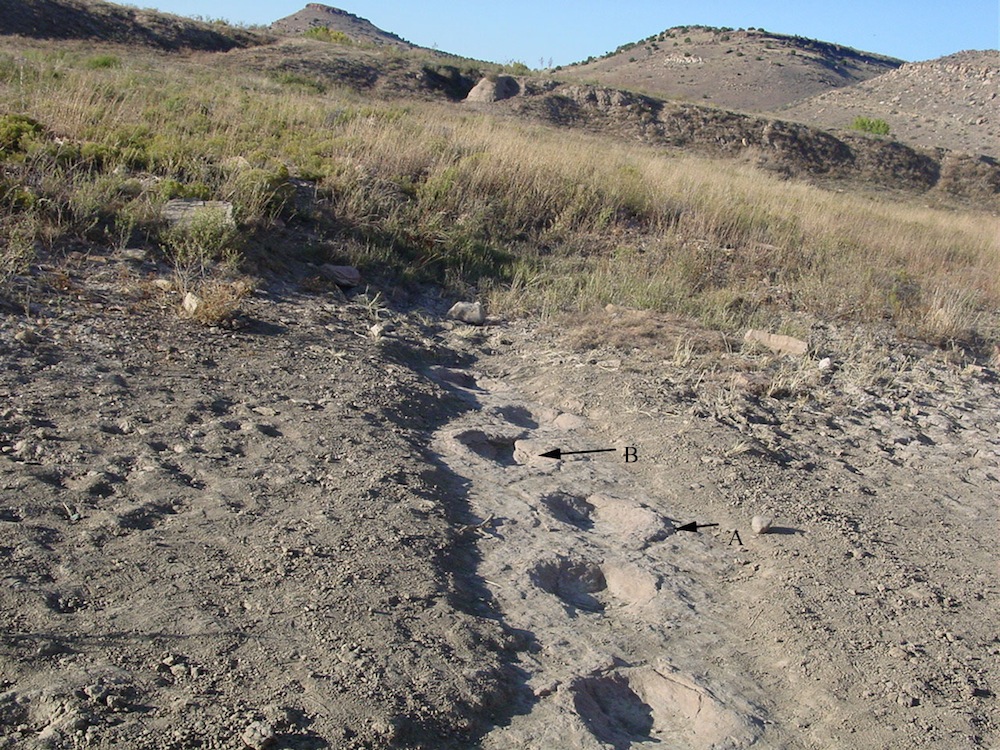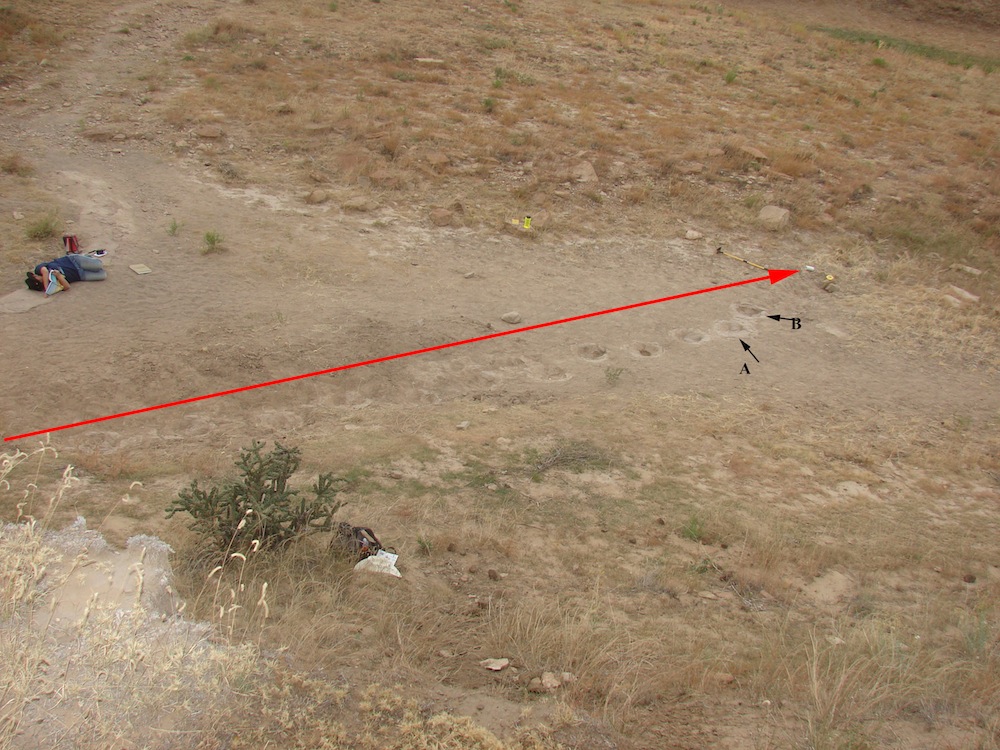Dinosaur's Klutz Moment Preserved in Time

DENVER — Some 150 million years ago, a two-legged dinosaur walking across a mudflat pulled a bit of a vaudevillian pratfall — and left a permanent record of its stumble.
A series of tracks in the Oklahoma panhandle near where the state borders Colorado and New Mexico reveal where a dinosaur slipped and caught itself before continuing on.
The klutzy dinosaur was a theropod, according to research presented Oct. 28 here at the annual meeting of the Geological Society of America. Theropods were a group that included such recognizable meat-eating wonders as T. rex and Deinonychus. [In Images: The Life of Tyrannosaurus Rex]
Researchers aren't sure what species created the tracks in Oklahoma, but the fossils do capture "a frozen moment in time," said study researcher J. Seth Hammond, a graduate student in geosciences at Fort Hays State University in Hays, Kan.
The tracks cross the bed of Carrizo Creek, a seasonal stream north of Kenton, Okla. The paleontologist who first described the tracks in the 1980s reported 47 footprints in a row, Hammond told LiveScience, but because of erosion, only 14 are visible today.
Two of the tracks are particularly interesting. One has a ridge of mud pushed out and up along its side. The other one is strangely deep — about 0.6 inches (1.6 centimeters) deeper than any of the other tracks.

"What we finally decided is, what must have happened is that the dinosaur slipped as it was walking across this really slippery mudflat, and then that's where it caught itself," Hammond said of the second, deep track.
Sign up for the Live Science daily newsletter now
Get the world’s most fascinating discoveries delivered straight to your inbox.
"In a way, what's interesting is the everyday trivia," Hammond said. "He's just walking across a mudflat and slips like anyone else might."
Tracks capturing odd moments in dinosaur life aren't unheard of; one trackway in Glen Rose, Texas, shows what appears to be a sauropod, or long-neck dino, being followed by a two-legged theropod. At one point, there is a missing set of theropod footprints, Hammond said, leading paleontologists to speculate the theropod may have attempted an attack on the sauropod and been lifted out of its tracks.
Dinosaur trackways are found all over North America. Earlier this year, for example, an amateur paleontologist discovered dinner-plate-size prints at NASA's Goddard Space Flight Center in Maryland. Even Alaska sports abundant tracks, including thousands along the Yukon River.
Editor's Note: This story has been updated to correct an instance where we cited "archaeologists" instead of "paleontologists."
Follow Stephanie Pappas on Twitter and Google+. Follow us @livescience, Facebook & Google+. Original article on LiveScience.

Stephanie Pappas is a contributing writer for Live Science, covering topics ranging from geoscience to archaeology to the human brain and behavior. She was previously a senior writer for Live Science but is now a freelancer based in Denver, Colorado, and regularly contributes to Scientific American and The Monitor, the monthly magazine of the American Psychological Association. Stephanie received a bachelor's degree in psychology from the University of South Carolina and a graduate certificate in science communication from the University of California, Santa Cruz.









